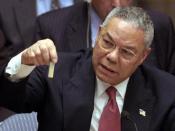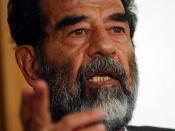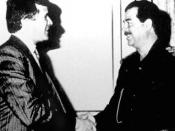The Persian Gulf War
The problems in Iraq began in 1979 when Saddam Hussein took control of Iraq. In 1991, Saddam Hussein started the Persian Gulf War by invading Kuwait. He accused Kuwait of stealing oil from the Rumain oil field. The crisis continued in August when Iraq, led by Hussein invaded Kuwait. A deadline was set for January 15, 1991 by the United Nations for all Iraqi forces to be out of Kuwait, but Saddam ignored the deadline. By January 1991, about 500,000 allied ground, air and naval forces form the United States, Saudi Arabia, Great Britain, Egypt, Syria and France were faced against 540,00 Iraqi army. Allied forces continued their air and land attack until Iraq started to retreat. On March 3, 1991, Iraqi representatives accepted Allied terms of a provisional truce and signed a permanent cease-fire on April 6, 1991 and agreed to pay for the damage to Kuwait.
By agreeing to the cease-fire, they also agreed to destroy their weapons of mass destruction and ballistic missiles with a range of greater than 150 kilometers and to destroy the facilities that produced them. It also calls for a UN Special Commission (UNSCOM) to ensure that Iraq was complying with the UN resolutions. This would by done by UNSCOM investigating and inspecting the weapons facilities. Also a UN peacekeeping team known as UNIKOM moved in to police the Iraq-Kuwait border. In addition, International forces set up a no-fly zone in northern and southern Iraq. The UN trade embargo remained in place after the war.
On June 1993, the United States launched a missile attack against Iraq in retaliation for a reported plot against former President George Bush. In October 1994, the United States, with the help of Britain and France, sent about 40,000 troops and more than 600...


